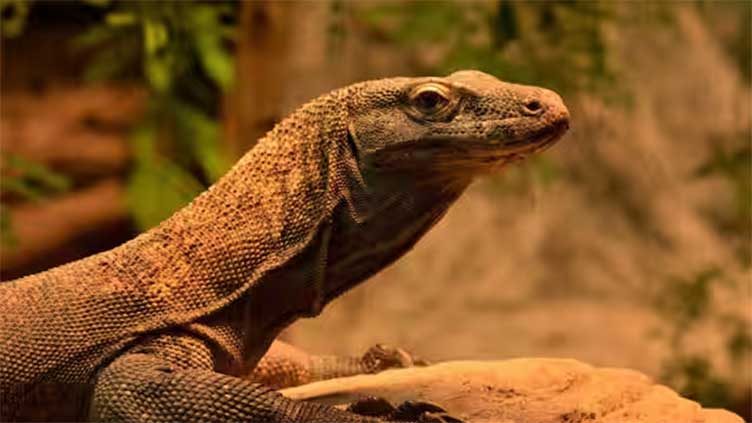Komodo dragons have coat of iron on their razor-like teeth

WeirdNews
Will it reveal dinosaurs’ secrets?
(Web Desk) - Scientists found that Komodo dragons, the world's largest living lizard, have a coat of iron on their razor-like teeth which helps them kill their prey.
The study, published on July 24 in the journal Nature Ecology & Evolution, was led by researchers from King's College London.
It noted that "this feature has never been reported before in a carnivorous reptile".
In the study titled, "Iron-coated Komodo dragon teeth and the complex dental enamel of carnivorous reptiles", the researchers carried out their work with advanced chemical and structural imaging.
Researchers took teeth from various Komodo dragon specimens. They also considered studying the teeth of several other living and extinct reptiles, including monitor lizards, crocodiles, alligators and dinosaurs.
The study revealed that the protective iron coats in orange pigment found in the tips and serrations of the teeth of Komodo dragons, who are native to Indonesia.
"We reveal that V. komodoensis teeth possess a unique adaptation for maintaining their cutting edges: orange, iron-enriched coatings on their tooth serrations and tips," the researchers said.
The study said concentrated iron played "a crucial role in supporting serrated teeth" in the huge lizards, who use them to kill their prey.
Notably, Komodo dragons prey on a range of animals from rodents to water buffalo and kill using a one-two punch of sharp teeth and a venomous bite.
The researchers also believe that the iron coatings may have existed in carnivorous dinosaurs but were lost over time because they could not find evidence of them on the fossilised teeth of reptiles and dinosaurs closely related to Komodo dragons.
As quoted by media reports, Dr Aaron LeBlanc, who is the lecturer in Dental Biosciences at King's College London, said: "Komodo dragons have curved, serrated teeth to rip and tear their prey just like those of meat-eating dinosaurs."
"We want to use this similarity to learn more about how carnivorous dinosaurs might have eaten and if they used iron in their teeth the same way as the Komodo dragon," said LeBlanc, who is also the study's lead author.
Komodo dragons can grow to three metres (10 feet) in length and weigh up to 90 kilograms (200 pounds). They are threatened by human activity and climate change destroying their habitat.


